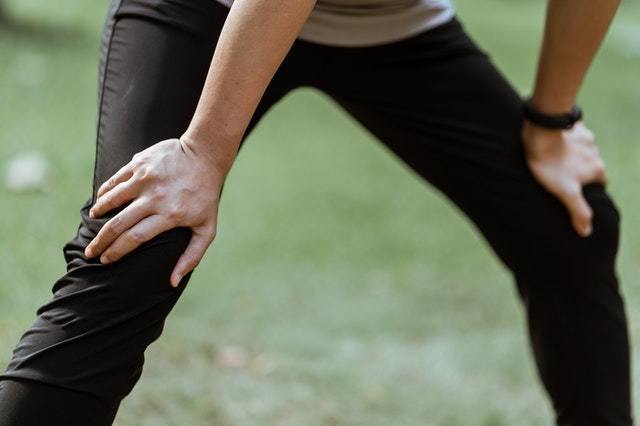
Transcript from Dr. Ducat's Video Blog - Scroll Down to Watch
Today, we're talking about the most common causes knee pain and some of the most common causes of knee pain. Especially in women, 90% of knee pain is caused by the thigh bone or the femur tilting in towards the midline of the body, putting a lot of torsion here on the knee cap and changing the alignment of the knee joint.
So what happens is when that femur bone's tilting in, the kneecap actually doesn't track correctly in the bones underneath, causing a lot of friction or grinding. That's what causes pain, swelling. Sometimes you'll even feel a grinding or sandpaper type sensation, or even hear that type of noise when you try to bend your knees, squat, get down on the ground, things like that.
Proper knee alignment, especially when you're bending or squatting, is making sure that you keep your knee caps right over the foot. You don't want your knees to deviate in towards the middle like this. You want it right over the foot. And some people find that position really, really challenging. A lot of times this could be a habit -- you've gotten in a habit of your knees going in like this. You don't realize it's wrong and it's hard to break those habits. Other times, it can actually be some weaknesses occurring here in your glute muscles, specifically glute medius.
So an exercise that you can do to start strengthening your glute medius this is to use a tough mini-band. Depending on how strong you are, you can use tougher or easier bands. But you take that band and you put it right around your legs, just above the knee. You place your feet out in a squat position. You don't want to be toed out too far out like this or be too narrow, so kind of that in-between squat position, which is the position you would land in if you were to jump forward.
And then you're going to press your knees out into the band, and then sit back into your squat. Now, if it makes you nervous to do it like this, you can always sit back and tap your butt on your bed or a chair. Really focus on pressing your knees into that band, pressing them out, getting that good knee alignment -- so my kneecap's right over the foot. Make sure you take it nice and slow.
Another exercise that you can do, same type of setup, is actually in a seated position like this. And you've got that band right around your knees. Your feet are out in that squat position. You let your knees touch and then you press away. So again, we're really flexing those muscles in the side of the hips, telling your brain, "Hey, knee, we want you in alignment with the foot." And then you can mix it into those squats like I was talking about before, tapping your butt on the chair. So I press my knee out and then now I'm doing my little squats tapping my butt on my chair. You can do a few of these, and then I can stay here on the chair. And again, work those side hip muscles, those glute medius muscles like this.
You can alternate back and forth between the squats and then the sitting exercise until you are totally fatigued in your glutes. And I always liked doing a test run at the end, just to see if my body remembers how to do the squat the way I told it to. So move the chair out of the way and then you can repeat that squat again and then see if it's easier for your knees to track right over your feet.
If you're having knee pain or you know someone with knee pain, and you need help figuring out how to fix it without surgery, look me up. I can help you in person here at my office in Bloomingdale, Illinois, or virtually through telehealth sessions as well. Book your appointment online or call/text me at 224-653-8094 and I'll be happy to assist you to move without pain.


